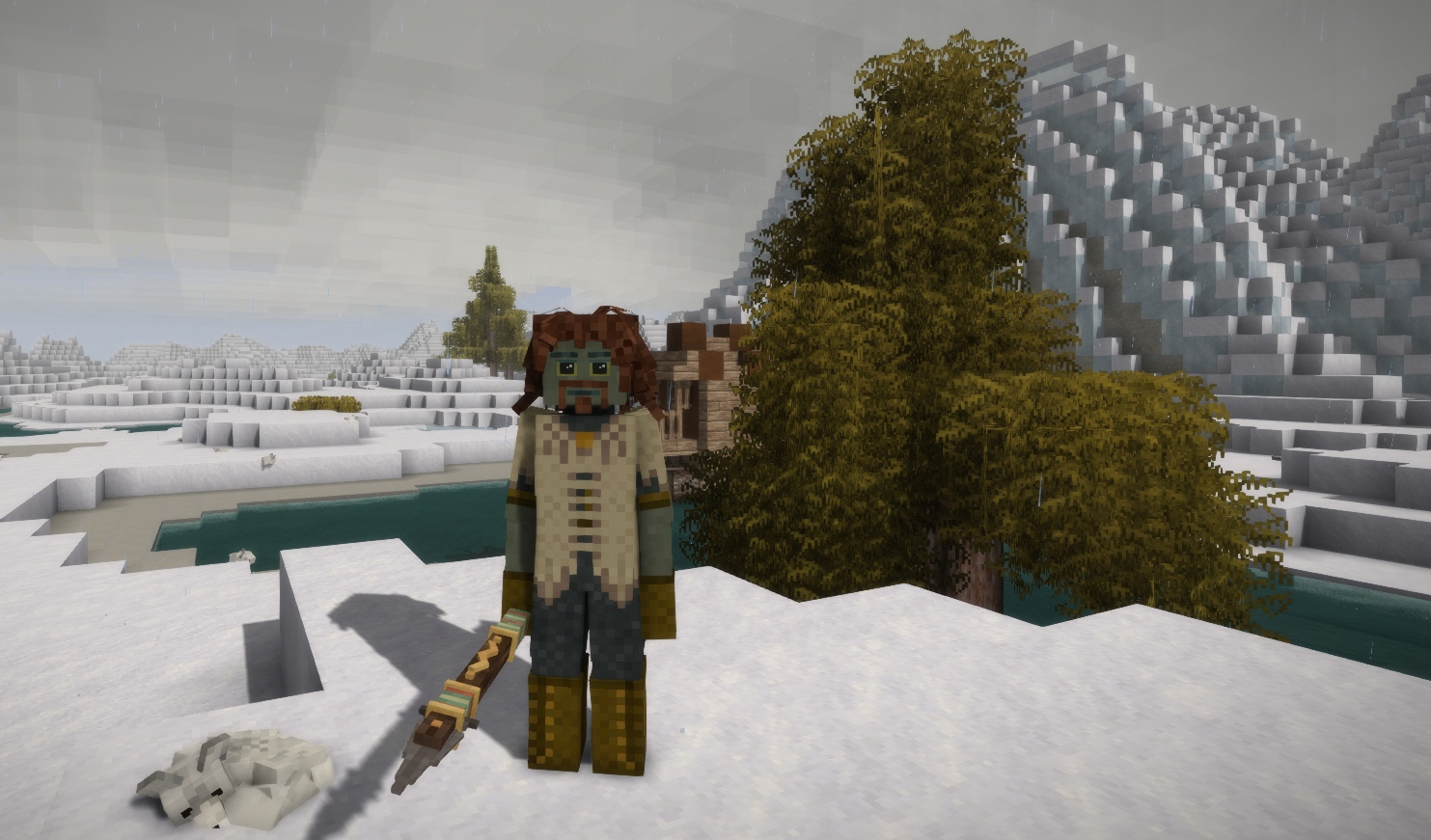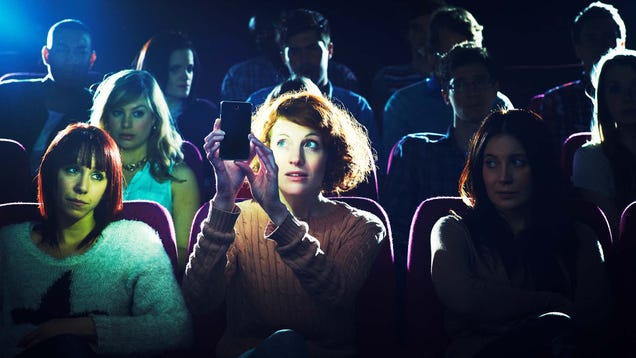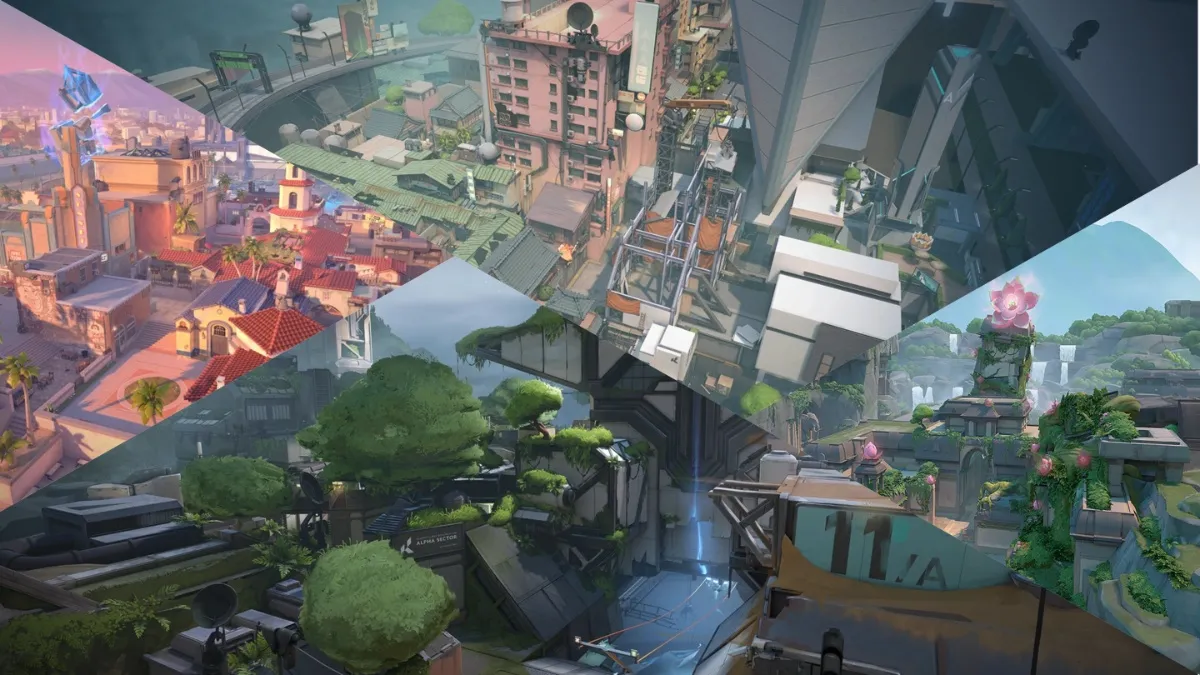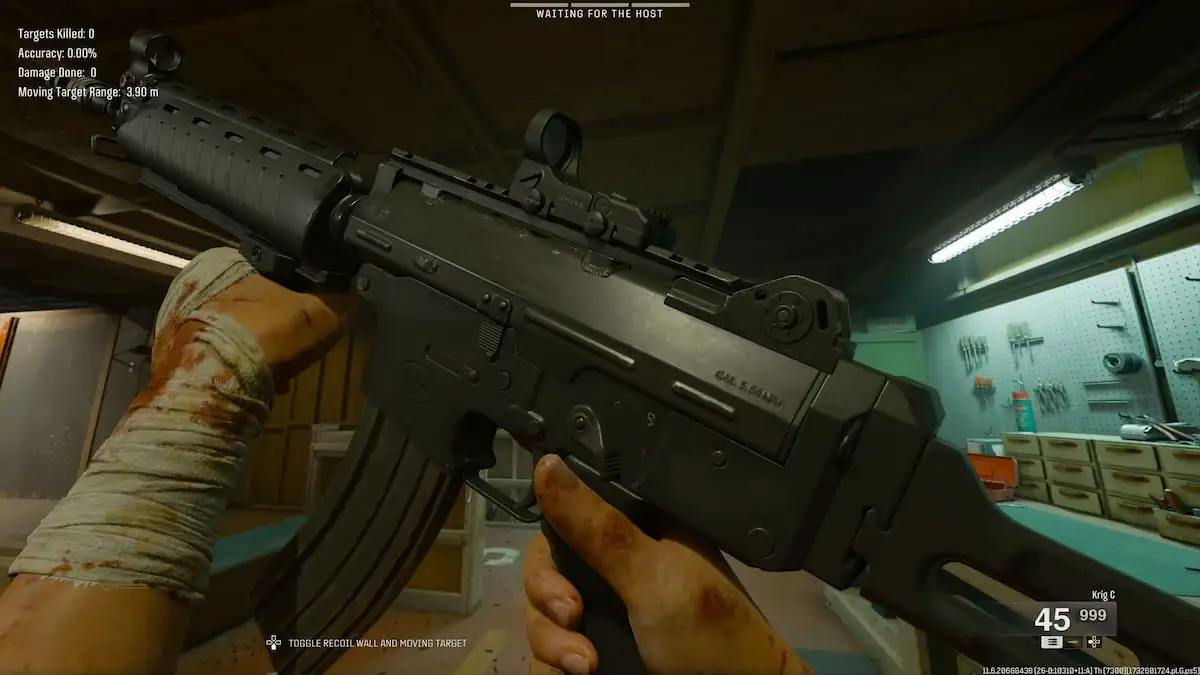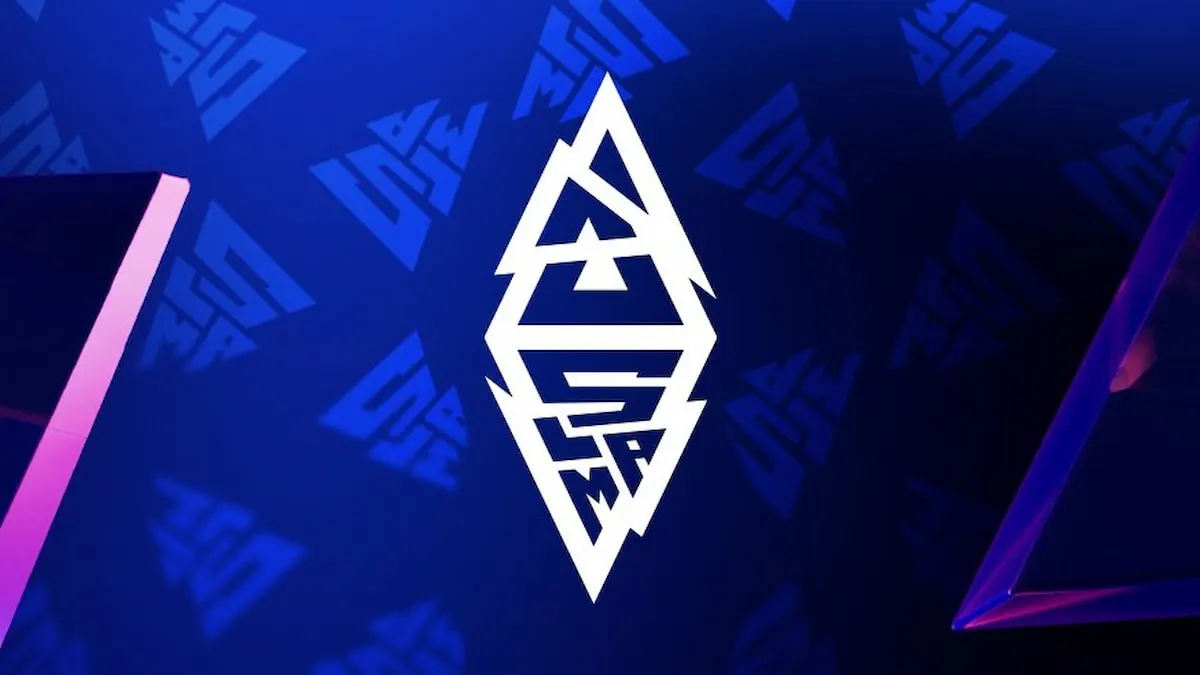
Adam Douglas has a ghastly secret. He shared the recipe for a Cuban dish – the Arroz con Pollo – in an in-game radio station in Oxenfree II: Lost Signals, and it’s one that he describes as “very controversial.” The trick, according to Douglas, a senior writer at Night School Studio, is to use boneless, skinless chicken thighs for the dish instead of bone-in, skin-on thighs and drumsticks. “My family’s from Cuba,” says Douglas. “It was my mom’s recipe that I have transformed into my recipe. And so, the version in the game is my version, which in the Cuban community is a very controversial version, and I stand by it. I still haven’t told my mom about any of this, by the way. I’m genuinely afraid of telling her this.” In between chuckles, Douglas’ colleague Sara Hebert, the publishing and marketing lead at Night School, promises to send a copy of this story to his mother. Afterparty Charming Chatter, Flawed Heroes In some ways, this closeness feels like an influence on the games Night School is known for, which often feature relatable, ordinary characters banding together in otherworldly, extraordinary circumstances. Oxenfree stars a teenager, Alex, embarking on a weekend trip with a group of friends to a local island, only to accidentally unleash a series of paranormal events. Its sequel is about a much older and stoic adult named Riley, who navigates similar supernatural happenings with her coworker, Jacob. Then there’s Afterparty, in which college best buds Milo and Lola drink their way out of Hell. These adventures feature conversations taking place organically; dialogue is the crux of the game rather than an auxiliary feature to nudge the plot along. Oxenfree This is the very DNA of Night School: a vision founders Krankel and Adam Hines hoped to realize from the very start. “I’ve been talking to Adam for years about wanting to start something [...] at that time, you had Telltale Games, which were cutscene focused, and then sometimes [you] walk around and solve some puzzles, and then on the other end of the spectrum, I think Last Of Us had just come out maybe a year or two earlier, and that was the apex of what narrative and action gameplay could be together,” says Krankel. “But we’re looking right in the middle and going like, ‘There’s no games out there that don’t have cutscenes, but yet have lots of stories that work really well.’” Night School’s most acclaimed feature is its dialogue tree system, which mimics the cadence of real-life chatter. Words are exchanged even as characters wander about their environments, and any lulls in conversations become meaningful; as Riley in Oxenfree II, for instance, you can even choose to ignore Jacob’s attempts at small talk and simply not respond if it’s proving too incessant. Conversations, too, can be interrupted when new distractions are introduced – spotting a new clue or pointing out a familiar landmark – causing them to diverge in different directions. At times, the focus on dialogue almost feels like a bold decision, which places incredible faith in the charisma of the games’ characters. After all, a deathly boring or unlikable cast may well be a death knell for the game. Oxenfree II Fortunately for many Night School games, their cast lacks a certain air of pretension – a quality plaguing many video game heroes today. Douglas attributes this to the flaws deliberately written into Night School protagonists. “[Riley from Oxenfree II] has made mistakes as we all have," he says. "She’s endeavoring to do better, as some of us try to do, and some of us don’t. And in some ways, she succeeds, and [in] some ways, she really doesn’t. And I think keeping that in mind, that life is complicated, it can be messy, it very rarely goes the way that you think it is. It is part of what made her, in my opinion, just so relatable and so human.” Night School co-founders Adam Hines (left), Sean Krankel (right), and Oxenfree II game director Bryant Cannon (middle) at Summer Game Fest Play Days 2023 But for all its successes with spearheading deeply authentic conversations, Krankel seems reluctant to peg Night School games as predominantly dialogue-driven stories, admitting this trajectory may change for the studio’s future games. "Story is critical, and even talking is critical, but the idea of wall-to-wall, highly verbose gameplay that you see in Afterparty or Oxenfree and Oxenfree II, I think we’re pretty malleable on that,” he says. Scrappy Beginnings As with many indie developers, Night School hails from humble beginnings, with the team working on the first Oxenfree out of Krankel’s kitchen. Krankel was previously co-workers with Cannon at Disney, as well as Oxenfree environment artist Heather Gross, while Hines (Krankel’s cousin) was fresh out of Telltale Games. In 2016, Oxenfree was released to critical acclaim. This was quickly followed by a Mr. Robot mobile game, Robot:1.51exfiltrati0n, inspired by the popular television thriller, and the one game Krankel reckons is Hines’ crowning achievement at Night School (the game has since been delisted from both Android and iOS app stores). It was also around this time that Telltale acquired the rights to make a Stranger Things game, with Night School contracted to develop a companion game. Telltale’s unexpected shuttering, however, meant Night School was unable to bring the game to fruition. Night School was understandably reticent about that episode, but Krankel lets in that the game was “semi-far along” in development, and was going to be closely tied to Telltale’s Stranger Things in some capacity. “The gist of it, that I’ll say, is just that they were making a big Stranger Things game and reached out to us about making a small one that could talk to the big one. And it was really cool. It was really interesting how the two games might have talked to each other [...] in a very compelling way.” Robot:1.51exfiltrati0n This Stranger Things companion game was built upon Robot:1.51exfiltrati0n, which unveiled its events through the discovery of a discarded burner phone, alongside text messages and conversations playing out in real time. In a way, this was another attempt by Night School to explore different ways of fleshing out dialogues – a vision that felt quintessentially Night School. “That was a foundation that we’ve never wanted to fully leave behind, but we haven’t done anything with that general design for years,” says Krankel. “It’s something now that we’re in the early stages of exploring [...] but the Stranger Things game that we were working on used that and took it a lot further.” Next Stop Nowhere Netflix and The Cloud Perhaps to Netflix, Night School’s storytelling ethos is complimentary to its cloud gaming ambitions. Having dabbled with interactive storytelling with Black Mirror: Bandersnatch, the streaming giant eventually acquired the studio in 2021, with Night School being the first developer included under Netflix’s growing roster of companies. Night School’s portfolio seems particularly suited to cloud gaming for now, given the lack of twitchy mechanics and a heavy emphasis on narrative rather than the adrenaline-fuelled bombast of other games. At the moment, Oxenfree remains one of two games that are part of Netflix’s beta test on making games playable on select television models, PCs, and Mac. “Netflix is a story company. Netflix tells stories. They entertain the world with different types of stories,” Krankel says. “We’re a story company; we just happen to make playable ones. And so, the conversation turned into less of a ‘Hey, we’d like to license your game,’ and more like, ‘Hey, would you like to do more stuff just for us? Would you like to keep using your general ethos in our bigger environment?’ And that felt pretty good.” Night School co-foudners Sean Krankel (left) and Adam Hines (right) filming for a behind the scenes video in Los Angeles Acquisitions are usually met with some amount of trepidation, but as hackneyed as this may sound, those we spoke to at Night School agree it hasn’t changed the studio in ways that aren’t true to its identity. Instead, any changes stem from just being part of a bigger organization now. “I have an answer that sounds facetious, but it’s not. It’s just that I’m in a lot more meetings now. That is not because of the Netflix acquisition,” says Rohrmann. “That’s just the nature of working for a larger organization. But yeah, other than that, I’m still making music the way I did before, so I’m super happy about that.” Cannon agrees. “I think it’s changed, but not necessarily because of Netflix. It’s just because we’ve grown and we’ve had to adapt to having more people at the studio, having a lot more different personalities at the studio and egos at the studio. And it’s just new, it’s something that a lot of studios have faced before. We’ve definitely had growing pains there, but it’s also enabled us to do things that are in the future going to be that much bigger and more exciting for our players.” The Night School Studios team Changing Tides That said, Netflix’s cloud gaming efforts are still in its nascent stages. It hasn’t been long since the demise of Google’s cloud gaming experiment Stadia, but Night School seems largely optimistic about the deal. The acquisition has given the studio more resources and the means to refine its games. Take, for instance, how Oxenfree II was released in 32 languages – a feat that Krankel says would not have been possible without Netflix. “Before, we were a tiny California company that, if we could scrounge up enough money to get localization funds, we would start putting the game out in other places, and we didn’t even know if our localizations were that good, to be totally honest, because we were a small studio working with outsourcing teams. And now we’re like, ‘We can put our s**t everywhere, and we should do it, and we should do it right,’” says Krankel. He even points out the studio might very well be working on its dream game at the moment, with Cannon at the helm as its game director. An example of dialogue localization in Oxenfree “I’d say when we were working out of Sean’s kitchen, we never ever thought that we’d be here 10 years later. As big as we are, to me, it did not seem possible,” says Cannon with a wistful smile. “And so, when I think about how much we’ve grown and how much more ability we have to make a big impact on the industry and players, it’s helpful for me to think back to those days and think of that beginner’s mindset we had, that was like, ‘We don’t know what we’re doing, but we’re so passionate about this. We care about it deeply.’ And thinking about how much that mattered to me, and how much if I were to describe to [Bryant from] 10 years ago what would come of this, he’d be very, very happy. It’s pretty incredible, and I don’t want to forget those early days.” This article originally appeared in Issue 363 of Game Informer.
Adam Douglas has a ghastly secret. He shared the recipe for a Cuban dish – the Arroz con Pollo – in an in-game radio station in Oxenfree II: Lost Signals, and it’s one that he describes as “very controversial.” The trick, according to Douglas, a senior writer at Night School Studio, is to use boneless, skinless chicken thighs for the dish instead of bone-in, skin-on thighs and drumsticks.
“My family’s from Cuba,” says Douglas. “It was my mom’s recipe that I have transformed into my recipe. And so, the version in the game is my version, which in the Cuban community is a very controversial version, and I stand by it. I still haven’t told my mom about any of this, by the way. I’m genuinely afraid of telling her this.”
In between chuckles, Douglas’ colleague Sara Hebert, the publishing and marketing lead at Night School, promises to send a copy of this story to his mother.
Afterparty
Charming Chatter, Flawed Heroes
In some ways, this closeness feels like an influence on the games Night School is known for, which often feature relatable, ordinary characters banding together in otherworldly, extraordinary circumstances. Oxenfree stars a teenager, Alex, embarking on a weekend trip with a group of friends to a local island, only to accidentally unleash a series of paranormal events. Its sequel is about a much older and stoic adult named Riley, who navigates similar supernatural happenings with her coworker, Jacob. Then there’s Afterparty, in which college best buds Milo and Lola drink their way out of Hell. These adventures feature conversations taking place organically; dialogue is the crux of the game rather than an auxiliary feature to nudge the plot along.
Oxenfree
This is the very DNA of Night School: a vision founders Krankel and Adam Hines hoped to realize from the very start.
“I’ve been talking to Adam for years about wanting to start something […] at that time, you had Telltale Games, which were cutscene focused, and then sometimes [you] walk around and solve some puzzles, and then on the other end of the spectrum, I think Last Of Us had just come out maybe a year or two earlier, and that was the apex of what narrative and action gameplay could be together,” says Krankel. “But we’re looking right in the middle and going like, ‘There’s no games out there that don’t have cutscenes, but yet have lots of stories that work really well.’”
Night School’s most acclaimed feature is its dialogue tree system, which mimics the cadence of real-life chatter. Words are exchanged even as characters wander about their environments, and any lulls in conversations become meaningful; as Riley in Oxenfree II, for instance, you can even choose to ignore Jacob’s attempts at small talk and simply not respond if it’s proving too incessant. Conversations, too, can be interrupted when new distractions are introduced – spotting a new clue or pointing out a familiar landmark – causing them to diverge in different directions. At times, the focus on dialogue almost feels like a bold decision, which places incredible faith in the charisma of the games’ characters. After all, a deathly boring or unlikable cast may well be a death knell for the game.
Oxenfree II
Fortunately for many Night School games, their cast lacks a certain air of pretension – a quality plaguing many video game heroes today. Douglas attributes this to the flaws deliberately written into Night School protagonists.
“[Riley from Oxenfree II] has made mistakes as we all have,” he says. “She’s endeavoring to do better, as some of us try to do, and some of us don’t. And in some ways, she succeeds, and [in] some ways, she really doesn’t. And I think keeping that in mind, that life is complicated, it can be messy, it very rarely goes the way that you think it is. It is part of what made her, in my opinion, just so relatable and so human.”
Night School co-founders Adam Hines (left), Sean Krankel (right), and Oxenfree II game director Bryant Cannon (middle) at Summer Game Fest Play Days 2023
But for all its successes with spearheading deeply authentic conversations, Krankel seems reluctant to peg Night School games as predominantly dialogue-driven stories, admitting this trajectory may change for the studio’s future games.
“Story is critical, and even talking is critical, but the idea of wall-to-wall, highly verbose gameplay that you see in Afterparty or Oxenfree and Oxenfree II, I think we’re pretty malleable on that,” he says.
Scrappy Beginnings
As with many indie developers, Night School hails from humble beginnings, with the team working on the first Oxenfree out of Krankel’s kitchen. Krankel was previously co-workers with Cannon at Disney, as well as Oxenfree environment artist Heather Gross, while Hines (Krankel’s cousin) was fresh out of Telltale Games. In 2016, Oxenfree was released to critical acclaim. This was quickly followed by a Mr. Robot mobile game, Robot:1.51exfiltrati0n, inspired by the popular television thriller, and the one game Krankel reckons is Hines’ crowning achievement at Night School (the game has since been delisted from both Android and iOS app stores). It was also around this time that Telltale acquired the rights to make a Stranger Things game, with Night School contracted to develop a companion game. Telltale’s unexpected shuttering, however, meant Night School was unable to bring the game to fruition.
Night School was understandably reticent about that episode, but Krankel lets in that the game was “semi-far along” in development, and was going to be closely tied to Telltale’s Stranger Things in some capacity. “The gist of it, that I’ll say, is just that they were making a big Stranger Things game and reached out to us about making a small one that could talk to the big one. And it was really cool. It was really interesting how the two games might have talked to each other […] in a very compelling way.”
Robot:1.51exfiltrati0n
This Stranger Things companion game was built upon Robot:1.51exfiltrati0n, which unveiled its events through the discovery of a discarded burner phone, alongside text messages and conversations playing out in real time.
In a way, this was another attempt by Night School to explore different ways of fleshing out dialogues – a vision that felt quintessentially Night School. “That was a foundation that we’ve never wanted to fully leave behind, but we haven’t done anything with that general design for years,” says Krankel. “It’s something now that we’re in the early stages of exploring […] but the Stranger Things game that we were working on used that and took it a lot further.”
Next Stop Nowhere
Netflix and The Cloud
Perhaps to Netflix, Night School’s storytelling ethos is complimentary to its cloud gaming ambitions. Having dabbled with interactive storytelling with Black Mirror: Bandersnatch, the streaming giant eventually acquired the studio in 2021, with Night School being the first developer included under Netflix’s growing roster of companies. Night School’s portfolio seems particularly suited to cloud gaming for now, given the lack of twitchy mechanics and a heavy emphasis on narrative rather than the adrenaline-fuelled bombast of other games. At the moment, Oxenfree remains one of two games that are part of Netflix’s beta test on making games playable on select television models, PCs, and Mac.
“Netflix is a story company. Netflix tells stories. They entertain the world with different types of stories,” Krankel says. “We’re a story company; we just happen to make playable ones. And so, the conversation turned into less of a ‘Hey, we’d like to license your game,’ and more like, ‘Hey, would you like to do more stuff just for us? Would you like to keep using your general ethos in our bigger environment?’ And that felt pretty good.”
Night School co-foudners Sean Krankel (left) and Adam Hines (right) filming for a behind the scenes video in Los Angeles
Acquisitions are usually met with some amount of trepidation, but as hackneyed as this may sound, those we spoke to at Night School agree it hasn’t changed the studio in ways that aren’t true to its identity. Instead, any changes stem from just being part of a bigger organization now.
“I have an answer that sounds facetious, but it’s not. It’s just that I’m in a lot more meetings now. That is not because of the Netflix acquisition,” says Rohrmann. “That’s just the nature of working for a larger organization. But yeah, other than that, I’m still making music the way I did before, so I’m super happy about that.”
Cannon agrees. “I think it’s changed, but not necessarily because of Netflix. It’s just because we’ve grown and we’ve had to adapt to having more people at the studio, having a lot more different personalities at the studio and egos at the studio. And it’s just new, it’s something that a lot of studios have faced before. We’ve definitely had growing pains there, but it’s also enabled us to do things that are in the future going to be that much bigger and more exciting for our players.”
The Night School Studios team
Changing Tides
That said, Netflix’s cloud gaming efforts are still in its nascent stages. It hasn’t been long since the demise of Google’s cloud gaming experiment Stadia, but Night School seems largely optimistic about the deal. The acquisition has given the studio more resources and the means to refine its games. Take, for instance, how Oxenfree II was released in 32 languages – a feat that Krankel says would not have been possible without Netflix.
“Before, we were a tiny California company that, if we could scrounge up enough money to get localization funds, we would start putting the game out in other places, and we didn’t even know if our localizations were that good, to be totally honest, because we were a small studio working with outsourcing teams. And now we’re like, ‘We can put our s**t everywhere, and we should do it, and we should do it right,’” says Krankel. He even points out the studio might very well be working on its dream game at the moment, with Cannon at the helm as its game director.
An example of dialogue localization in Oxenfree
“I’d say when we were working out of Sean’s kitchen, we never ever thought that we’d be here 10 years later. As big as we are, to me, it did not seem possible,” says Cannon with a wistful smile. “And so, when I think about how much we’ve grown and how much more ability we have to make a big impact on the industry and players, it’s helpful for me to think back to those days and think of that beginner’s mindset we had, that was like, ‘We don’t know what we’re doing, but we’re so passionate about this. We care about it deeply.’ And thinking about how much that mattered to me, and how much if I were to describe to [Bryant from] 10 years ago what would come of this, he’d be very, very happy. It’s pretty incredible, and I don’t want to forget those early days.”
This article originally appeared in Issue 363 of Game Informer.
